Day 8 – Digest
Day 8 Rain fell as Typhoon Khanun rolled into town. We started our day by continuing our discussions with the Archbishops of Nagasaki and the Bishop of Hiroshima about the partnership between our four dioceses. The talks were cordial, and we made quick progress as all parties agreed on the work’s major pillars. We attended…
Read More